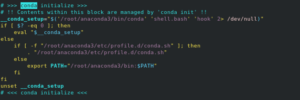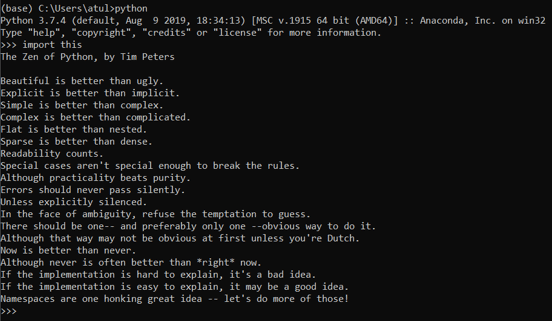
- #Anaconda python distribution how to
- #Anaconda python distribution install
- #Anaconda python distribution software
#Anaconda python distribution install
It’s worth noticing that the more recent versions of pip can handle external dependencies using wheels, but, by using Anaconda, you’ll be able to install critical libraries for data science more smoothly. To circumvent this problem, Continuum Analytics released Anaconda, a Python distribution focused on scientific applications and Conda, a package and environment management system, which is used by the Anaconda distribution. However, for numerical computations, there are several dependencies that are not written in Python, so the initial releases of pip could not solve the problem by themselves.

#Anaconda python distribution software
Since 2011, Python has included pip, a package management system used to install and manage software packages written in Python. Use the installed Python stack to build a neural network and train it to solve a classic classification problemįree Bonus: Click here to get access to a Conda cheat sheet with handy usage examples for managing your Python environment and packages.
#Anaconda python distribution how to

Jupyter Notebook is an interactive web UI environment to create notebook documents for python, R languages. Anaconda is the most used distribution platform for python & R programming languages in the data science & machine learning community as it simplifies the installation of packages like pandas, NumPy, SciPy, and many more. In this article you have learned how to install Anaconda distribution on windows and using Jupyter notebook. I have tried my best to lay out step-by-step instructions, In case I miss any or If you have any issues installing, please comment below. This completes installing Anaconda on windows and running Jupyter Notebook. On Jupyter, each cell is a statement, so you can run each cell independently when there are no dependencies on previous cells.


Now select New -> PythonX and enter the below lines and select Run. This opens up Jupyter Notebook in the default browser. It will take a few seconds to install Jupyter to your environment, once the install completes, you can open Jupyter from the same screen or by accessing Anaconda Navigator -> Environments -> your environment (mine pandas-tutorial) -> select Open With Jupyter Notebook.


 0 kommentar(er)
0 kommentar(er)
